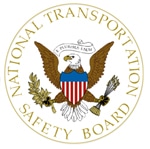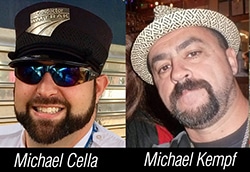Investigative journalist Topher Sanders released a report on ProPublica today where he reveals how multiple injuries and fatalities were swept under the rug by Class I carriers BNSF, Union Pacific, CSX and Norfolk Southern. The article goes into detail on stories common to us in the industry. Jared Cassity, SMART-TD Alternate National Legislative Director, helped shine a public spotlight on this critical issue.
Read What’s Missing From Railroad Safety Data? Dead Workers and Severed Limbs on ProPublica
Brother Cassity is a nationally recognized expert on railroad safety and a leader of SMART-TD’s National Safety Team (NST). He does not sugarcoat his responses, especially when it comes to the well-being of our members.
“The system is rigged, especially when it comes to injuries. You see what they want you to see,” Cassity said in the article. ProPublica found that carriers pick and choose what injuries they report so that they can boast about their safety records.
As the largest rail union in the nation, SMART-TD is an established authority for rail-related issues. Brother Cassity’s efforts reflect our union’s commitment to safeguard members, have our hardships recognized and to force the railroads to improve conditions for those who keep our economy moving.
Please take a moment to read this article and share it with friends and family on your social media accounts. Widespread understanding of the industry’s culture of corruption is the best weapon we all have to combat it.

 The National Transportation Safety Board (NTSB) has released a preliminary report on the Oct. 4 collision of two Union Pacific (UP) trains in Granite Canyon, Wyo., that killed SMART Transportation Division Local 446 members Jason Vincent Martinez, 40, and Benjamin “Benji” George Brozovich, 39.
The National Transportation Safety Board (NTSB) has released a preliminary report on the Oct. 4 collision of two Union Pacific (UP) trains in Granite Canyon, Wyo., that killed SMART Transportation Division Local 446 members Jason Vincent Martinez, 40, and Benjamin “Benji” George Brozovich, 39.
 WASHINGTON – The National Transportation Safety Board Sept. 24 issued a special investigation report on the recent increase in deaths of railroad and rail transit roadway workers on or near tracks and made recommendations to reduce the number of fatalities.
WASHINGTON – The National Transportation Safety Board Sept. 24 issued a special investigation report on the recent increase in deaths of railroad and rail transit roadway workers on or near tracks and made recommendations to reduce the number of fatalities.